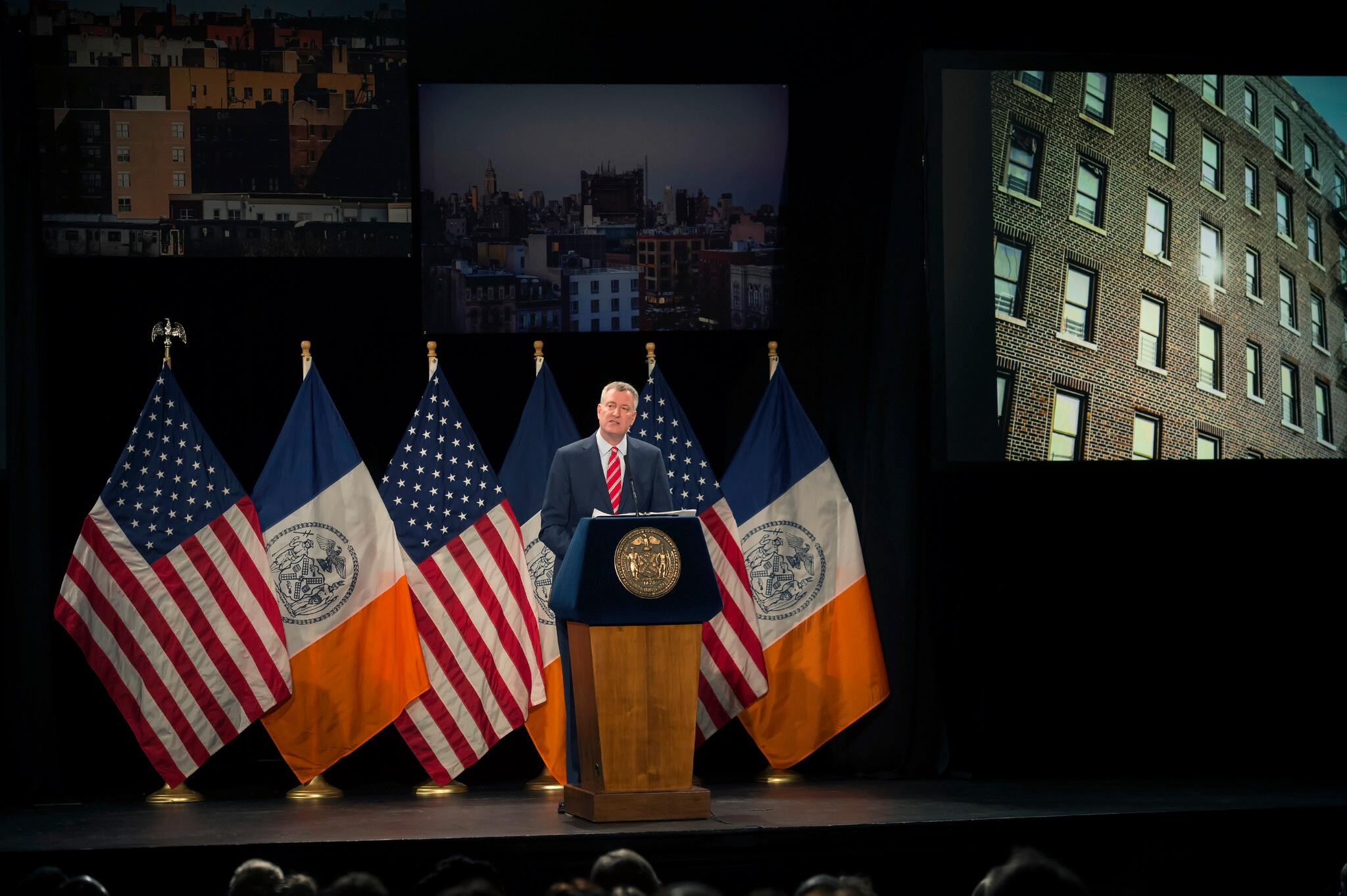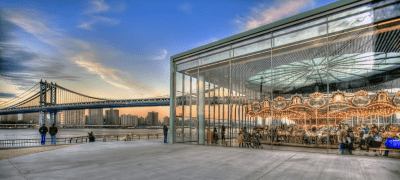De Blasio Announced a Bunch of Exciting New Plans Today for Affordable Housing and Helping Artists
In many ways, Mayor de Blasio’s first year in office has been a stark departure from the Bloomberg reign. It’s not all that surprising then that de Blasio, who has seemingly tried to break with the previous administration in every possible way, went so far as to change the name of the annual State of the City address to the feel-good “State of Our City.”
But the Mayor’s speech wasn’t just replete with rhetoric, he also laid out his administration’s concrete plans for actually making the city more inclusive. While many of the plans have been in the works for quite some time as central policy initiatives set during his campaign, some came as a surprise.
One of the gravest issues addressed by de Blasio during the speech was the crisis of affordable housing. After what was mostly a brag fest about his successful policy initiatives in education and immigration, the Mayor turned to a topic everyone seemed to be holding their breath for. “You can’t tap in to all that’s good about New York City if you can’t afford to actually live here,” he said. “We risk losing the very soul of this place if it isn’t a place for every kind of person.”
He acknowledged that rent has only gone up in the city, while the affordable housing stock has declined significantly, two things he attributed to the policies of previous administrations. “How’d we end up here? The city has, for decades, let developers write their own rules when it came to housing.” As a result, there has been what he called, “a bias toward luxury housing.”
To solve this, the administration is “writing new rules for how we are going to build this city, ones that mandate affordable housing as a condition of development in areas rezoned for residential use.” This plan, which calls for the construction of 80,000 new affordable housing units by 2024, was announced last year, but today the Mayor revealed exactly where these units would be–the neighborhoods included Flushing West, Jerome Avenue Corridor in the South Bronx, East New York, Long Island City, and Bay Street Corridor on the north shore of Staten Island.
The mayor said that while construction of these new affordable units would be achieved by “building up,” that density would only be added to “appropriate” areas. “We are not embarking to build towering skyscrapers where they don’t belong,” he said. The initiatives would also seek to preserve the existing character of the neighborhoods.
De Blasio also called for mandatory inclusionary zoning that would require all major developments in certain areas to include affordable housing units. “It’s not an option, it’s not a maybe, it has to happen,” he said, pointing to Astoria Cove as a “living example,” of this new requirement. The megacomplex, which was just approved by City Council back in November, will include 1,700 units, 27 percent of which will be affordable.
A more surprising announcement, one that WNYC got wind of yesterday, is the administration’s effort to lend a helping hand to artists, many of whom are clearly struggling to simultaneously pay rent for both studios and apartments. The Mayor revealed plans to create 1,500 affordable live-work spaces for artists, in addition to 500 affordable studios. Though the administration projects this initiative will be realized by 2020.
“Through their vision [artists] created extraordinary things that help define us,” de Blasio said. “They bring joy to us, they inspire our young people […] they also help make this city a mecca for tourists.”
Another surprising announcement was that by 2017, the ferry system will be revamped. The Mayor acknowledged the barriers faced by New Yorkers living in the outer boroughs and brought special attention to the Rockaways. The revelation elicited audible screams of approval from the audience. “We are the ultimate coastal city, but for some reason we haven’t had a true ferry system in decades,” de Blasio said. The new ferry routes will benefit not just the Rockaways, but South Brooklyn, Astoria, Soundview, and the Lower East Side. Rides will cost the same as a MetroCard.
To address what the Mayor called an “inadequate” mental healthcare system in the city, de Blasio reiterated a plan, which was first announced by First Lady Chirlane McCray last week, for a task force that will assess the myriad problems, a project that will be completed by this summer. Much like his wife, the Mayor reminded his audience that the issue of mental health–one that “we have to strive to address out loud”—is of personal significance to his family.
“Our administration is about action,” the Mayor declared toward the end of his speech. He called out the “cynics” who had doubted his plans for universal pre-Kindergarten could work, and promised that the city would see the same results for the policy measures he’d encapsulated in his speech today.”That is how we will take on the Tale of Two Cities,” he said.
You might also like 




















